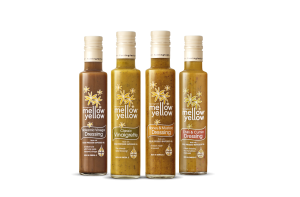It’s amazing how a few consecutive days of dry weather completely changes one’s mood after the long wet winter. Fields that were water logged on a Monday morning and looking more appropriate for planting rice than wheat were, by Thursday afternoon, dry enough to start thinking about preparing the soil to plant our spring crops.
From an impatient farmer’s perspective, spring arrived around the middle of March, since when we have been working continuously. It is not just us, as all our neighbours are busy working away in their fields as everything appears to need doing at once.
The first job was to put some fertiliser on the autumn planted crops as soils warm up and day length increases, letting dormant crops realise it is time to start their long growth through spring. To achieve this growth, crops, like humans, require good nutrition to grow healthily, which is gained from the soil and some extra plant food in the form of fertiliser.
Fertiliser applied, attention turned to crops that are not yet planted. Firstly the spring beans, which were planted in pretty much ideal conditions in the third week of March. Next, it is the spring wheat this will take a bit longer to create an ideal seedbed, rather than rushing in just to get the job done quickly. We have started cultivation in preparation for the wheat, but on our heavy clay soils they can change from mud pie texture to concrete in the space of 36 hours, meaning that a mixture of perfect timing, a bit of luck and working with nature rather than fighting it is the name of the game.
In addition to being busy on the farm, we also start thinking about the new season of shows in Farrington Oils. Farrington’s Mellow Yellow is now ten years old and I have always enjoyed meeting customers at food shows, as they provide the perfect opportunity to explain to existing and potential customers why they may like to try our products. The first show of 2015 will be the BBC Good Food Show in Harrogate. We are currently putting the stand together in the office, making sure everything looks spick and span, ready to go, as well as making sure we can get it all in the back of a van to take to Yorkshire. If you are going, we will look forward to seeing you there. If not, then look out for us at other shows during 2015.
Sometimes I just have to spend a few undisturbed days in the office with my head buried in spreadsheets trying to do some strategy planning for the future of the business. As well as being vitally important, I do enjoy trying to work out the best way for all the pieces of the jigsaw to fit together.
Firstly I will be updating my whole farm Environmental Policy. This document is all about what we stand for and looks at everything from water resources and wildlife, to staff and the machinery choices we make on the farm. It is a true record of where we are as a business, as well as putting some targets for the following year. I update this annually, following discussions of what our ambitions are for the year.
Then there are the cash flow forecasts that need completing for this year and next, a vital tool to help give an indication of where and when the money is going to come from and what we will have left to invest. Farming, like any other business, does not have a crystal ball, particularly when it comes to predicting future weather and commodity trends, but it does give me an indication to start planning around.
Business planning is a combination of strategy, mixed with plenty of compromise, a bit of aspiration and a realisation that not everything can be done at once. For example over the last couple of years the farm has had to cut back its shopping list drastically due to a poor harvest two years ago. The tractor we recently bought, I wanted last year, but couldn’t afford. Now I am looking at the investments required for the next two years and trying to prioritise those, whilst trying to keep the business agile.
Our fourteen-year-old combine harvester is a crucial piece of machinery. A wheel recently departed from the rest of the machine on the road and the combine ended up in the ditch. Thankfully no serious damaged was done to people or machine, however, this brings home the fact that we need to look at replacing this over the next couple of years and at around half a million pounds for a new one, I will be looking for another used machine. For this year, one of the things near the top of the list is a solar power system to go on the oil factory roof. This ticks many boxes both financially and environmentally, so as long as I can get the figures to work, it should become a reality over the next few months.
Farming Diary
From LEAF Demonstration Farmer Duncan Farrington

 Oils
Oils Rapeseed Oil
Rapeseed Oil Chili Oil
Chili Oil Dressings
Dressings Classic Vinaigrette
Classic Vinaigrette Balsamic Dressing
Balsamic Dressing Honey & Mustard
Honey & Mustard Chili & Cumin
Chili & Cumin